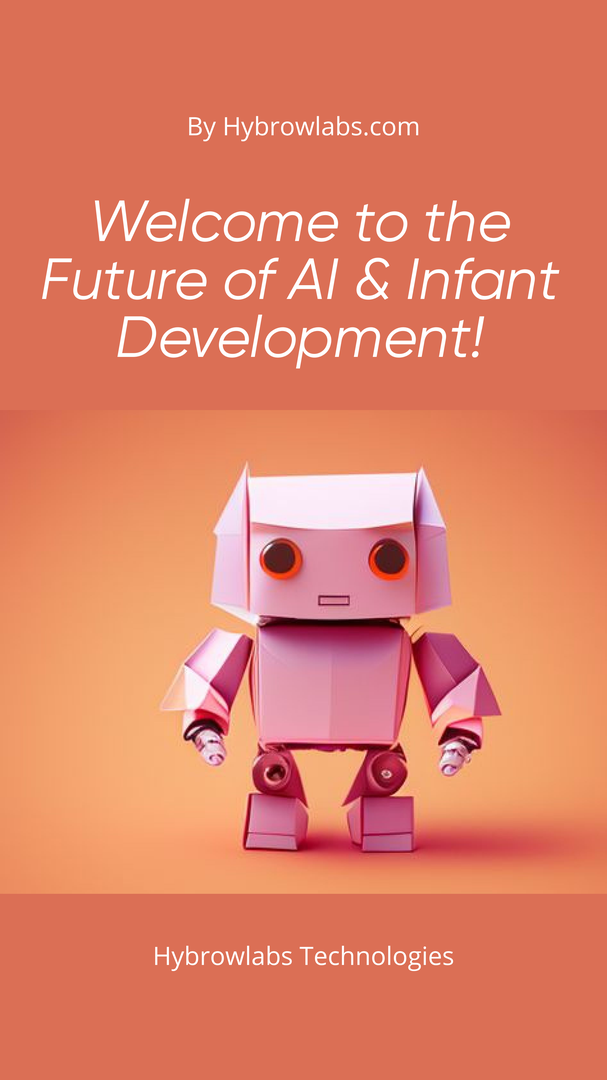
Have you ever wondered what the future of artificial intelligence holds? Well, let me tell you, it's a lot more exciting than just robots & sci-fi movies. In fact, one of the most promising applications of AI is in infant development & intelligence, which has the potential to revolutionize the way we raise our children. And at the forefront of this innovation is the combination of two cutting-edge technologies: BabyAGI & LangChain. In this article, we will explore the potential of this powerful duo & how it could change the landscape of early childhood education forever. So, grab your cup of coffee & let's explore the Potential of BabyAGI How LangChain Could Transform Infant Development & Intelligence
Understanding BabyAGI and LangChain:
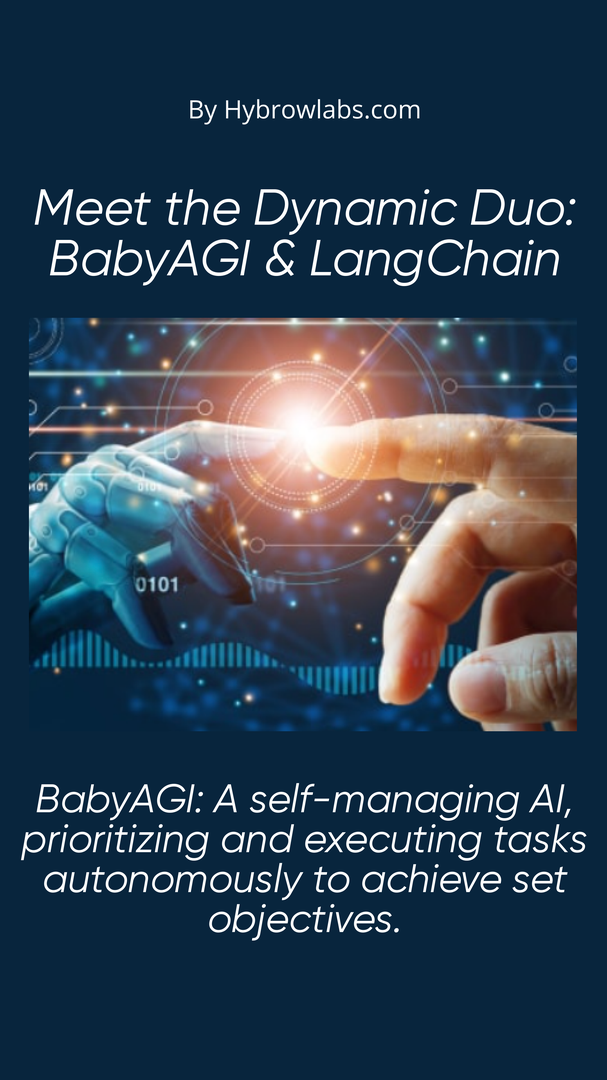
BabyAGI is an AI agent designed to generate and execute tasks based on a given objective, with the ability to prioritize & manage tasks autonomously. LangChain is a platform that can be used to implement BabyAGI and create recursive agents. One of the benefits of using LangChain is to implement BabyAGI is the ability to easily integrate with specific VectorStores & model providers, such as Pinecone and OpenAI. According to the BabyAGI User Guide on the LangChain website, the main components of creating recursive agents using BabyAGI are the agent's objectives, initial tasks & the agent's recursive behavior. The agent's objectives define the goal that the agent is trying to achieve, while initial tasks provide a starting point for the agent's task-generation process. The agent's recursive behavior involves the agent's ability to generate & prioritize tasks autonomously.
Additionally, according to TechStory, BabyAGI's task management is essential for its functioning. The system maintains a task list represented by a deque (double-ended queue) data structure. The task list is used to manage & prioritize tasks, and the system autonomously creates new tasks based on completed results.
Finally, LangChain provides tools to improve the performance of BabyAGI. For example, the Autonomous Agents & Agent Simulations article on the LangChain blog states that LangChain provides both planning and execution steps for BabyAGI. This allows the agent to plan a sequence of actions at once, rather than just the next one.
How LangChain is Revolutionizing Infant Development and Intelligence with BabyAGI?
1. Language modeling:
LangChain's natural language processing (NLP) capabilities allow for sophisticated language modeling that can help BabyAGI understand & communicate in natural language, improving its ability to learn from its environment and interact with humans.
2. Task prioritization:
LangChain's ability to prioritize tasks helps BabyAGI focus on the most important tasks at any given time, leading to more efficient learning & development.
3. Personalization:
LangChain's ability to personalize the learning experience for BabyAGI based on its individual strengths, weaknesses & learning style can help accelerate its development & enhance its intelligence.
4. Continuous learning:
LangChain enables BabyAGI to continuously learn and adapt to new information, allowing it to stay up-to-date with the latest knowledge & skills.
5. Integration with other technologies:
LangChain's flexibility allows for integration with other technologies such as computer vision, robotics & sensor systems, expanding the possibilities for BabyAGI's development & intelligence.
Step-by-step Process of Implementing BabyAGI with LangChain:
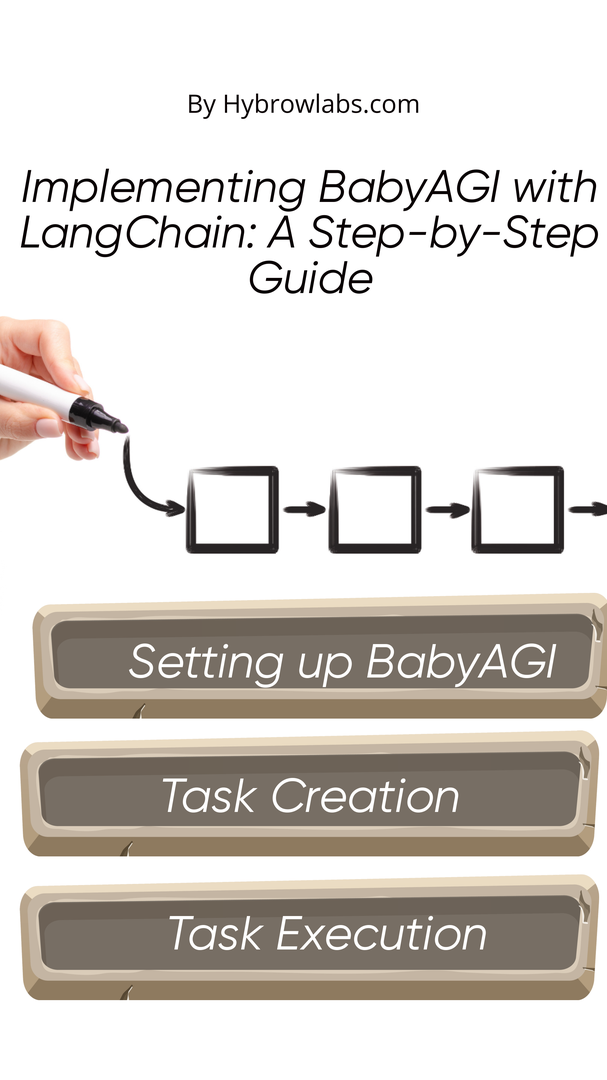
A. Setting up BabyAGI:
- Installation of dependencies and packages
To get started with BabyAGI & LangChain, you will need to install the necessary dependencies & packages. The following command can be used to install the dependencies:
pip install tensorflow numpy pandas
- Creation of a virtual environment
It is recommended to create a virtual environment to isolate the project dependencies from the system dependencies. The following commands can be used to create & activate a virtual environment:
python -m venv babyagi_envsource babyagi_env/bin/activate
B. Task Creation:
- Defining the tasks for BabyAGI
Before you can start training BabyAGI, you need to define the tasks that it will be learning. These tasks can be defined using natural language descriptions or by providing examples of the desired behavior.
For example, you could define a task for BabyAGI to learn how to identify different shapes. This task could be defined as follows:
Task: Identify shapes
Description: Given an image containing shapes, identify the type of shape present (e.g. circle, square, triangle).
- Designing a task prioritization system
Once you have defined the tasks, you need to design a task prioritization system. This system will determine which tasks BabyAGI should focus on based on their importance & difficulty.
For example, you could design a prioritization system that prioritizes tasks based on their importance & the current level of mastery of BabyAGI. The following code shows a simple example of such a prioritization system:
tasks = {'identify_shapes': {'importance': 8,'difficulty': 5,'current_mastery': 2},'recognize_numbers': {'importance': 6,'difficulty': 7,'current_mastery': 3},'understand_language': {'importance': 10,'difficulty': 8,'current_mastery': 1}}priority = []for task, values in tasks.items():priority.append((task, values['importance'] * values['current_mastery'] / values['difficulty']))priority = sorted(priority, key=lambda x: x[1], reverse=True)print(priority)
This code will prioritize the tasks based on their importance, difficulty & current mastery level.
C. Task Execution:
- Creating a task scheduler
To execute the tasks, you need to create a task scheduler. This scheduler will determine when to execute each task based on their priority & the current state of BabyAGI.
For example, the following code shows a simple task scheduler that executes the highest priority task that BabyAGI is capable of performing:
def execute_task(tasks, babyagi_state):for task, priority in tasks:if babyagi_state.can_perform(task):babyagi_state.execute_task(task)return
- Execution of tasks using LangChain
To execute the tasks, you have to use LangChain, which is a programming language designed specifically for building AGI systems. You have to define the tasks & the logic for executing them using LangChain.
For example, the following code shows a simple LangChain script for identifying shapes:
task identify_shapes:inputs:imageoutputs:shape_typesteps:# Preprocess the imagepreprocessed_image = preprocess(image)# Identify the shape typeshape_type = identify_shape(preprocessed_image)return shape_typeD. Running BabyAGICreating a BabyAGI controllerNow that you have created the task scheduler and LangChain executor, you need to create a controller that will manage the execution of BabyAGI. Here's an example of how to create a BabyAGI controller:class BabyAGIController:def __init__(self, tasks):self.tasks = tasksdef run(self):# Start the task schedulertask_scheduler(self.tasks)
- Running BabyAGI using Koala
Finally, you can run BabyAGI using Koala, a platform for building and deploying AI models. Here's how to run BabyAGI using Koala:
import koala
# Create a BabyAGI controllercontroller = BabyAGIController(tasks)# Deploy the controller on Koalakoala.deploy(controller.run)
That's it! By following these steps, you should be able to implement BabyAGI with LangChain.
Possible Impacts on the Future of Education and Artificial Intelligence:
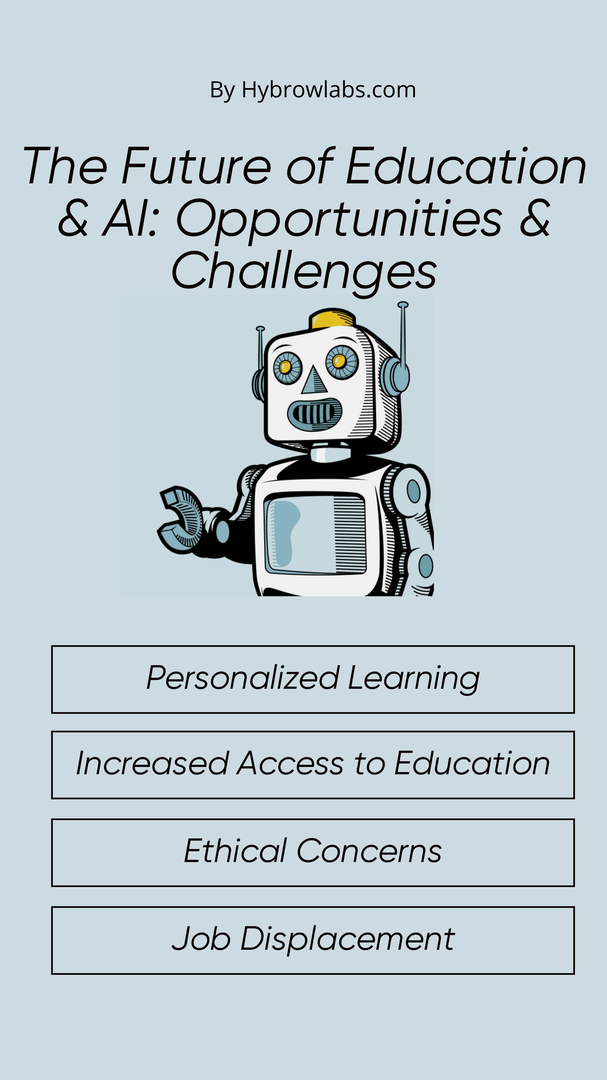
1. Personalized Learning:
One of the biggest impacts of AI on education is the potential for personalized learning. AI can analyze data on how individual students learn & adapt to their needs, providing tailored instruction & feedback. This could help students to learn at their own pace & achieve better outcomes.
2. Improved Teaching Efficiency:
AI could also help teachers to be more efficient in their work. By automating administrative tasks, grading assignments & providing feedback, teachers could spend more time on activities that require their expertise, such as developing lesson plans & working with students one-on-one.
3. Increased Access to Education:
AI could help to increase access to education for underprivileged students. For example, AI-powered chatbots could provide tutoring & support to students who don't have access to traditional educational resources. This could help to level the playing field & reduce educational inequality.
4. Enhanced Learning Environments:
AI can also help to create enhanced learning environments that are more engaging & interactive. For example, virtual reality & augmented reality technologies powered by AI could create immersive learning experiences that are more engaging & effective than traditional methods.
5. Ethical Concerns:
However, there are also concerns about the ethical implications of AI in education. For example, some worry that AI could reinforce existing biases & stereotypes, or that it could be used to unfairly advantage some students over others.
6. Job Displacement:
Another concern is that AI could displace human educators & other educational professionals. While AI can certainly automate some tasks, it is unlikely to replace the human element of education entirely. However, it could lead to a shift in the types of jobs & skills that are required in the field.
Conclusion:
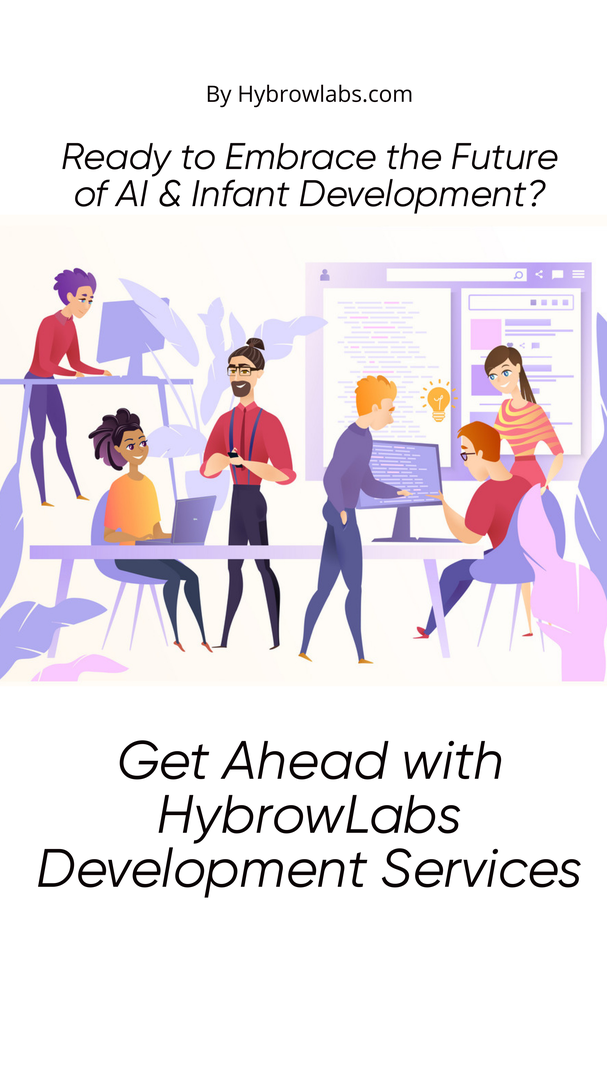
We've covered a lot of ground, haven't we? From understanding the basics of BabyAGI and LangChain to diving deep into the implementation process. It's an exciting time for the field of artificial intelligence and infant development, with the potential for innovation and progress being vast. By unlocking the potential of BabyAGI with LangChain, we can change the world and create a smarter future for all of us. To get the best assistance for the upcoming future, consider exploring the HybrowLabs Development Services.
FAQ-
1. How can BabyAGI & LangChain be implemented in real-world applications?
BabyAGI & LangChain can be implemented in a variety of real-world applications, such as educational technology, healthcare & customer service. However, careful consideration must be given to ethical & legal implications before implementing these technologies.
2. Are there any ethical concerns with the development of BabyAGI?
Yes, there are ethical concerns surrounding the development & implementation of AI systems such as BabyAGI. These include issues of privacy, accountability & potential misuse of the technology.
3. How can LangChain help unlock the potential of BabyAGI?
LangChain can help unlock the potential of BabyAGI by providing a powerful platform for natural language processing & understanding, allowing BabyAGI to communicate & interact with the world in a more human-like manner.
4. What is the importance of infant development & intelligence?
Infant development & intelligence are critical factors in determining future cognitive & emotional development, as well as overall health and well-being.
5. What is the process for implementing BabyAGI with LangChain?
The process for implementing BabyAGI with LangChain involves setting up the BabyAGI environment, defining & prioritizing tasks, executing those tasks using LangChain & then running the BabyAGI system using a controller & a tool such as Koala.



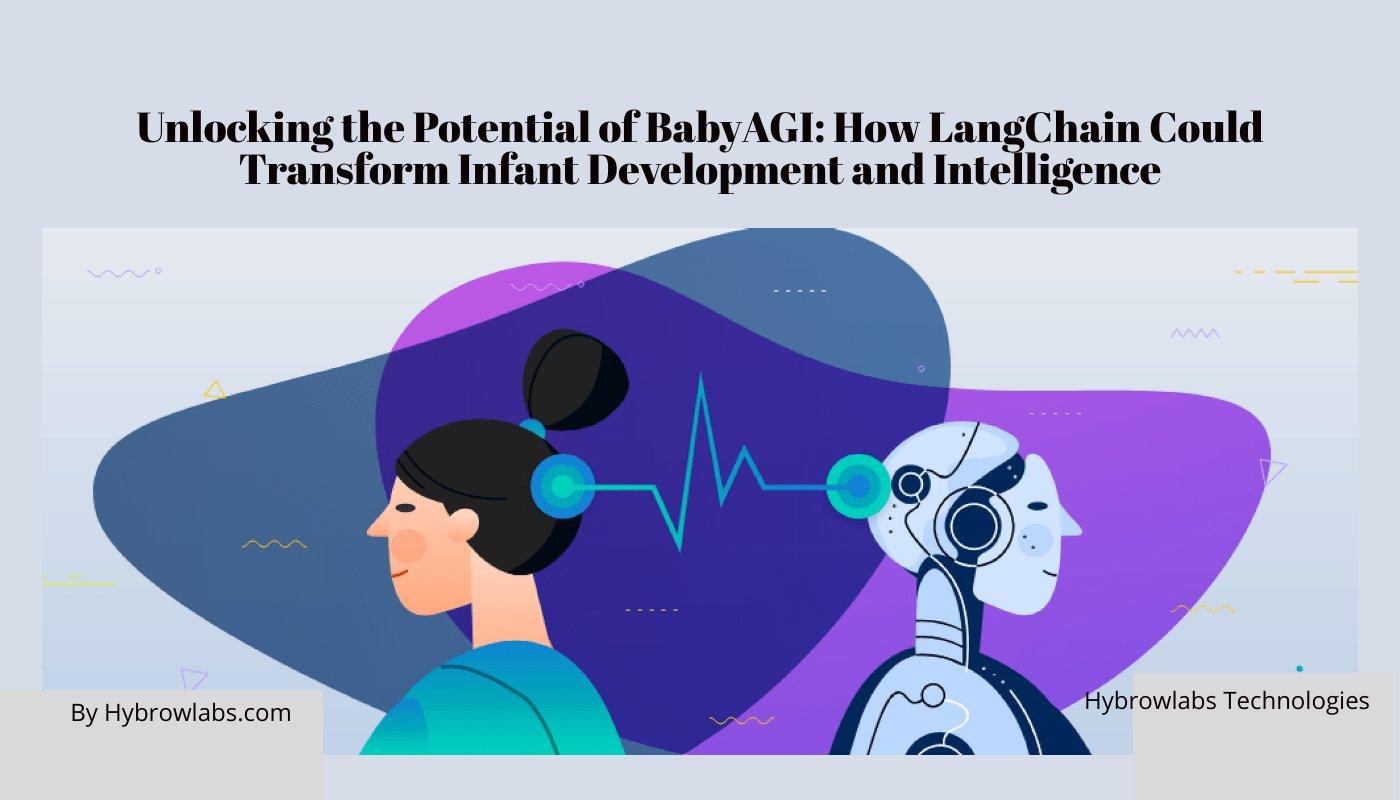


a3dc85.jpg)

.jpg)
fd8f11.png)
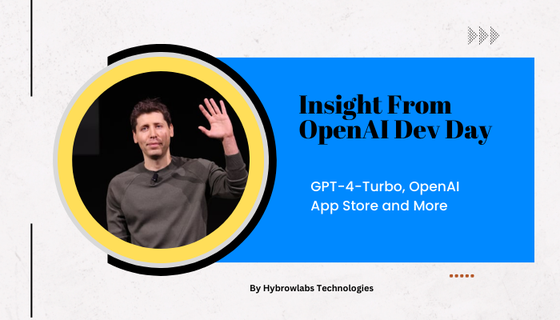
.jpg)
.jpg)